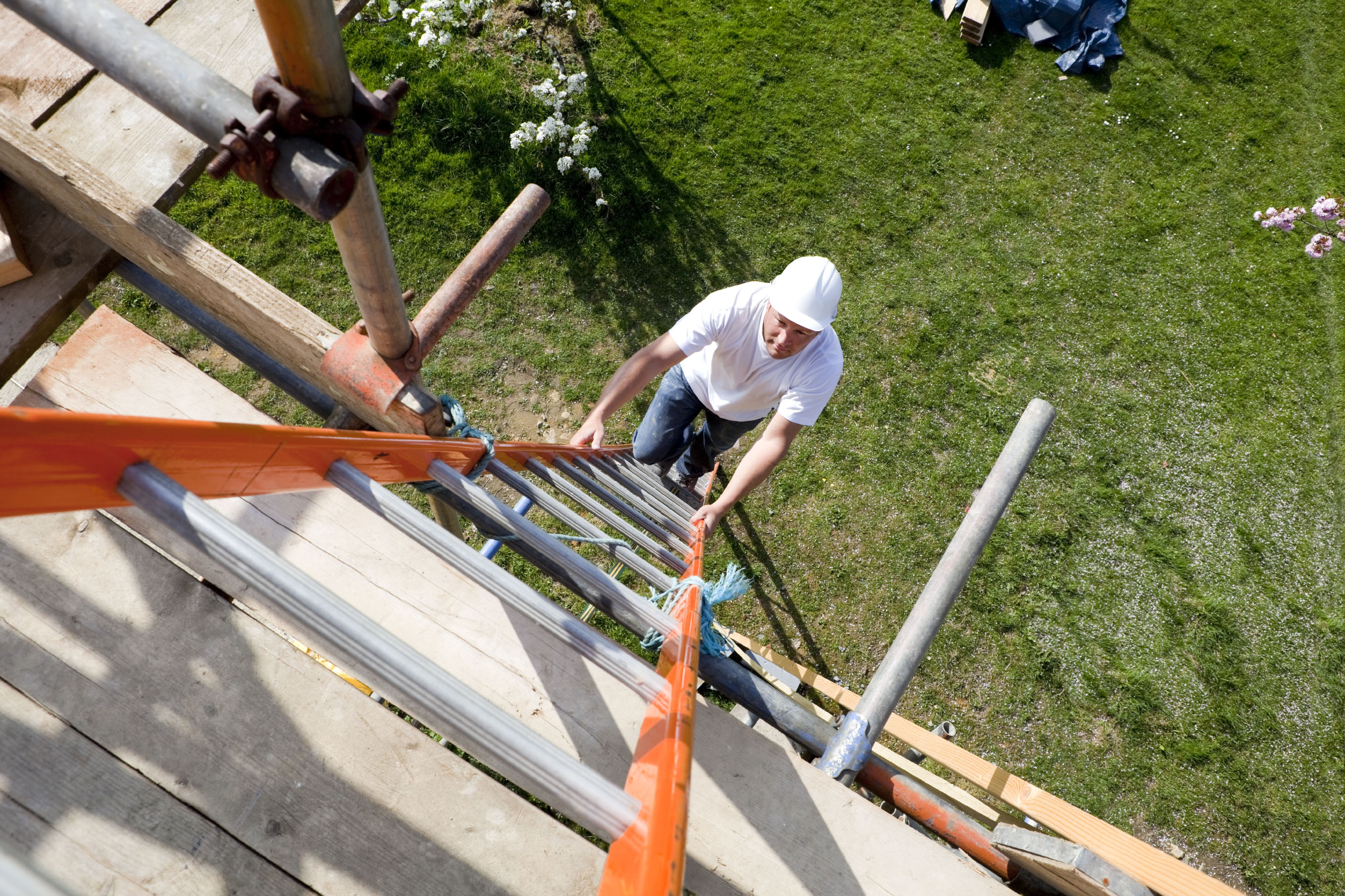
US Department of Labor’s Occupational Safety and Health Administration (OSHA) have set out a detailed guide to ladder safety to prevent jobsite injuries. You can get the whole guide here, but we
have set out some of the most salient points to remember. These rules apply to all ladders on the site, even if they are job-made.
- Each ladder that is self-supporting must be capable of holding four times the intended load. Ladders which are not self-supporting should be able to hold 3.3 times their intended load. These intended loads should also take into account the forces that will be applied by ice buildups, wind and rigging.
- Each rung of the ladder must be able to support a load of 250 pounds or 114 kg and should be level and uniformly spaced. They should also be dimpled, ribbed or rubberized to reduce the possibility of slipping.
- Rungs should be spaced between 10 inches (25cm) and 14 inches (36cm) apart.
- Ensure that rungs are shaped so that employee’s feet will not slip off them and that they are free of grease, oil and other substances that could cause a worker to slip.
- Check that ladders are on level, stable surfaces or secured to prevent movement.
- Secure ladders that are placed in areas of high traffic and doorways, or set up a barrier to prevent workers from knocking into ladders.
- Don’t manipulate or move the ladder when it is in use and don’t connect two ladders together unless they are specifically designed for this purpose.
- If the worker or the ladder may come into contact with electrical equipment, use ladders with nonconductive rails.
- Always have one hand on the ladder and face the ladder when climbing up or down.
- Don’t use the top step of a step ladder and ensure metal locking devices are used to keep the ladder in the open position during use.
- Portable ladders used on landing surfaces must extend at least 3” or 0.9m above the landing surface or be secured to the landing surface with a grab rail so that workers can safely get on and off the ladder.
- Fixed ladders should not exceed 24 feet (7.3m) and each rung must be able to support at least two loads of 250 pounds (114 kg).
- Ladders must be inspected regularly and any that are broken, are missing rungs or are rusted or corroded must be immediately taken out of use until repaired. Ensure that you clearly mark them with a “Do not Use’ sign. Do not return to use until the ladder has been repaired in such a way that it meets its original design criteria.
